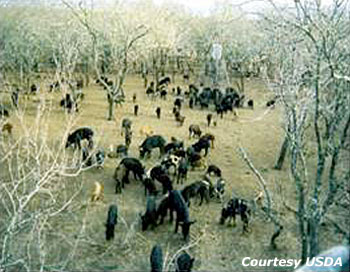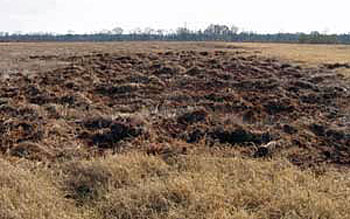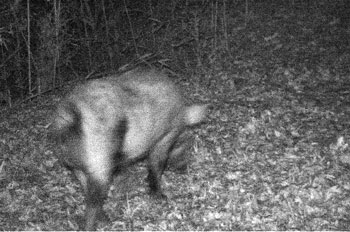
Sun Tzu in The Art of War: “If you know the enemy and know yourself, your victory will not stand in doubt.” Whether or not you view wild hogs as your own enemy, land owners and agriculture officials certainly do. An old sage hunter echoed that ancient warrior wisdom when he told me years ago, “Know the quarry you are about to tangle with so you are familiar with the steps of the dance.” I wish somebody had told me about that back at my senior prom.
I started hunting big game in earnest all across the continent and Europe long before the concept of tactical hunting was conceived, but I have to admit I have only hunted adversarial game that could eat me or run me down a couple of times. That included black bear and moose. Had I known everything I know now years ago, I would have scratched and clawed to raise the funds to hunt Africa and subjects like grizzly up in Alaska. But there are plenty of videos on YouTube showing hefty hogs charging humans, proving their status as dangerous game, plentiful and available much closer to home. (Read the shootout story on SHWAT: Feral Offender vs. the Police – After Action Report).
I’ve hunted hogs several times but as a collateral exercise to other pursuits. Prior to the explosive interest in tactical hog hunting in general, and for me in particular, I had not really educated myself on the wild hog as a singular hunting target. I have now taken up that study, and will share some of my findings with you here.
Special Hog Weapons and Tactics™ founders tossed me this pork rib bone so naturally I had to gnaw on it a bit. Turns out some of the best, latest and great biological work done on wild hogs is conducted right here in my native Mississippi at our land-grant college, Mississippi State University. Professor Bronson Strickland is the prime source, should you SHWAT.com readers wish to delve into this subject deeper. They have put out some excellent work on hog behavior, management, and control. Good reading.
I’ve had to dust off my master’s degree in wildlife sciences a bit here, because my primary focus related to my outdoor writing has been concentrated on white-tailed deer and wild turkey all these 30+ years. Now my interest is drawn to the nature of the wild hog. So, in compact form, I share here just a thumbnail sketch of the creatures’ ethology, or the science of its animal behavior.
Here then are some prime tidbits about our quarry: The Wild Hog.
Crazy Sex Fanatics
- To put it mildly, wild hogs are prolific generators of offspring.
- Their reproductive potential is extensive, efficient, and highly successful.
- Pigs are sexually matured and active at the age of merely six months.
- Litter sizes typically average six, but have known to go upwards of 8 or more.
Hog Adaptability
- Wild pigs are opportunists. They are habitat generalists living virtually anywhere.
- They are highly adaptable. They are happily satisfied to move into new areas and assume residency with little trouble. In Mississippi where Mississippi River floods last year forced wild pigs further east in the state roughly increasing their habitat range by a hundred miles.
- They can thrive in many different habitats from arid climates to wetland swamps to colder zones with freezing temperatures and frozen precipitation. They are quite adaptable to a wide range of climates.
 Hogs Eat Like a Pig
Hogs Eat Like a Pig
- As omnivores, wild hogs will eat both plants and animal sources.
- They eat mostly plants, but will consume invertebrates including worms, insects, and insect larvae. The search for palatable roots, young grasses, and insects results in the rooting behavior wild pigs are so famous for.
- Hogs have been known to eat mammals, small ones mostly, but also the flesh young of larger animals. They will also consume eggs found in ground nests when foraging about.
- Since hogs run in groups so their accumulative consumption can be considerable. Their voracious appetites can result in total destruction of agricultural crops, and native browse.
- Each female hog can birth twice a year. You do the math on successive generations.
Wild Hogs have little to fear but Humans
- About the only things pigs fear are Bar-B-Que pits.
- Their natural mortality is exceedingly low.Their young are subject to predators but the losses are not thought to be significant.
- Hogs can reach the intimidation size of 40 pounds fairly quickly, and at that size few natural predators will chose to tangle with them on their own turf.
- Researchers are not certain how or if diseases and parasites impact the wild hog.
- Wild hogs are killed mostly by human interactions either by hunting, trapping, or auto collisions. Even these measures are not widely effective in stemming the tide of the national wild hog population expansion.
 As I said, this only barely scratches the surface of the ethology of the wild hog.
As I said, this only barely scratches the surface of the ethology of the wild hog.
Researchers focused on this animal species have spent lifelong studies on each of these biological behavior issues related to the wild hog. Volumes of material can be found covering each aspect mentioned in the bullet points above.
Much of that detailed information probably is of little or minor concern to most tactical hog hunters. But any serious hunter should come to understand the animal they are pursuing. It’s just part of the process of knowing how hogs behave, where they live, how they live, and how their proliferation creates opportunities for our sport.
In the big picture, SWHAT is one of a few organized players who can illustrate a positive side to our sport beside just the thrill of double tapping a big porker as it plows up somebody’s corn field. As in-the-know tactical hog hunters, we should share our knowledge on wild pigs and the numerous benefits of our mission at every opportunity, in a positive light.

